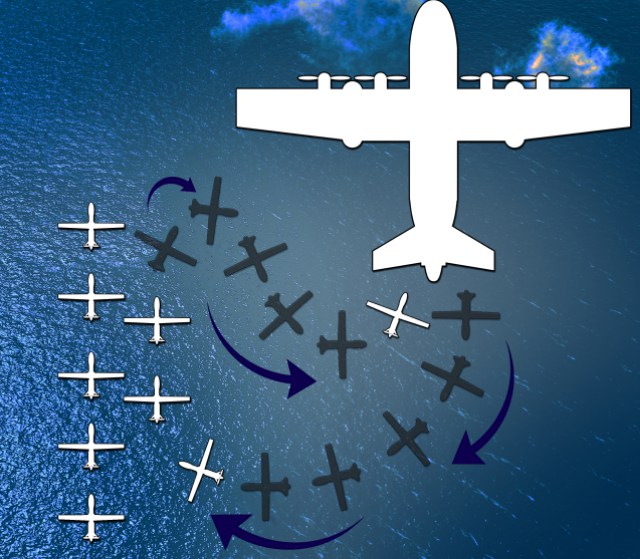DARPA is interested in exploring the feasibility of small UAS airborne launch and recovery approaches for providing distributed airborne capabilities from existing air platforms. The agency envisions a large aircraft that, with minimal modification, could launch and recover multiple small unmanned systems from a standoff distance. It is postulated that there is a useful trade space in terms of launch platforms; recovery platforms; recovery techniques; the number of UAS employed; the size (and cost) of the UAS; UAS speed, range, and endurance; UAS propulsion; UAS survivability; payload types; and operational concepts.
This RFI seeks information on concept feasibility, unique and enabling platform technologies, system architectures, concepts of operation, modeling and simulation, potential demonstration platforms and approaches, and reusable low-cost delivery vehicle (UAS) platform concepts. DARPA is primarily interested in platform-related technologies and concepts. This RFI also seeks rough order of magnitude (ROM) cost and schedule information to assist in planning a potential future DARPA program in this area.
The new RFI invites short (8 pages or less) responses that must address three primary areas:
- System-level technologies and concepts that would enable low-cost reusable small UAS platforms and airborne launch and recovery systems that would require minimal modification of existing large aircraft types. This area includes modeling and simulation as well as feasibility analysis, including substantiating preliminary data if available.
- Potentially high-payoff operational concepts and mission applications for distributed airborne capabilities and architectures, as well as relative capability and affordability compared to conventional approaches (e.g., monolithic aircraft and payloads or missile-based approaches). DARPA hopes to leverage significant investments in the area of precision relative navigation, which seeks to enable extremely coordinated flight activities among aircraft, as well as recent and ongoing development of small payloads (100 pounds or less).
- Proposed plans for achieving full-system flight demonstrations within four years, to assist in planning for a potential future DARPA program. DARPA is interested not only in what system functionality such plans could reasonably achieve within that timeframe, but also how to best demonstrate this functionality to potential users and transition partners. These notional plans should include rough order-of-magnitude (ROM) cost and schedule information, as well as interim risk reduction and demonstration events to evaluate program progress and validate system feasibility and interim capabilities.
Technology development beyond these three areas will be considered so long as it supports the RFI’s goals. DARPA is particularly interested in engaging nontraditional contributors to help develop leap-ahead technologies in the focus areas above, as well as other technologies that could potentially improve both the survivability and effectiveness of future manned and unmanned air systems.
Source: FedBizOpps

